California Academy of Science
Kinesthetic Astronomy: Moon Phases
We are the world! Each of your class members models Earth and holds a styrofoam ball to see its phases. Thorough teacher background information and a detailed lesson plan will make this a cinch to teach. If you do not want to purchase...
School World
Moon Observation Project
Mrs. Flynt has designed a 12-day moon observation activity that is best assigned when daylight hours are shorter. Middle school moon experts record several factors, including the altitude above the horizon, the azimuth, the phase, and...
Curated OER
Life on the Moon
Students study the physical properties of the Moon. In this life on the moon lesson students describe the ways life on the Moon would be different than on Earth.
TeachEngineering
Teach Engineering: Life on the Moon
Students learn about the physical properties of the Moon. They compare these to the properties of the Earth to determine how life would be different for people living on the Moon. Using their understanding of these differences, they...
Cornell University
Cornell University: Astronomy: The Phases of the Moon
This site from Cornell University provides great information on the different phases of the moon. As the Moon moves in its orbit around the Sun, our view of the side illuminated by the Sun changes. Furthermore, the rising and setting...
Extreme Science
Extreme Science: The Moon
Read about the birth of Earth's moon, its composition, orbit, visible phases, and other interesting facts. Link to a virtual moon phase interactive which shows the current lunar phase and the phase on any date in the past or future.
Science Education Resource Center at Carleton College
Serc: Exploration of Shadows: Earth, Moon, Sun System: Moon Phases Eclipses
A guided inquiry where students participate in the simulation of moon phases and eclipses.
Science Education Resource Center at Carleton College
Serc: The Moon in Motion: Monitoring the Moon's Phases
Using a moon calendar data-gathering tool, students discover the patterns of the lunar phases through observations and other exploration activities.
Science Education Resource Center at Carleton College
Serc: Going Through a Phase: The Changing Patterns of Our Moons Appearance
Students learn about lunar phases by investigating and observing the changing shapes of the moon as sunlight is reflected away from the moon.
Science Education Resource Center at Carleton College
Serc: Cycles of the Sun and Moon
Students download sunrise and sunset data along with moon phase data, and graph these data sets together in a spreadsheet in order to visualize the cycles of the seasons and the moon.
NASA
Nasa Star Child: What Are the Phases of the Moon?
This page provides basic information about the causes of the phases of the Moon. A good diagram shows the lit portion of the Moon as seen from Earth through one complete Lunar cycle.
Other
On Hiatus: The Moon
This commercial site [without any advertising] provides a diagram of the current illumination of the Moon, and the dates of the most recent and upcoming New, Quarter, and Full Moon phases. All dates and times are in universal Time, only.
NASA
Nasa Star Child: Moonlight Madness
The revolution of the Moon around the Earth causes the Moon to appear to change shape in the sky. These apparently different shapes are called "phases" of the Moon. The Moon passes through a cycle of eight phases which repeats itself...
Michigan Reach Out
Reach Out michigan.org: Phases of the Moon
This site explains the phases of the moon and an easy way to remember waxing and waning. Students have to explain a given phase to their classmates with a model.
TOPS Learning Systems
Tops Learning Systems: Top Science: Moon on a Stick [Pdf]
Investigate why the moon does not always appear to be round.
PBS
Nova: Lunar Puzzlers
See if you can answer 4 challenging questions that will require you to take a lunar perspective. These questions deal with the way things look from the moon.
US Navy
Usno: Virtual Reality Moon Phase Pictures
In addition to providing the current phase of the Moon [within 4 hours] you can find the phase of the moon for any date and time from 1800 to 2199 A.D. Universal, Eastern, Central, Mountain, and Pacific Time Zones will apply to most users.



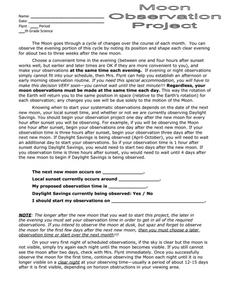

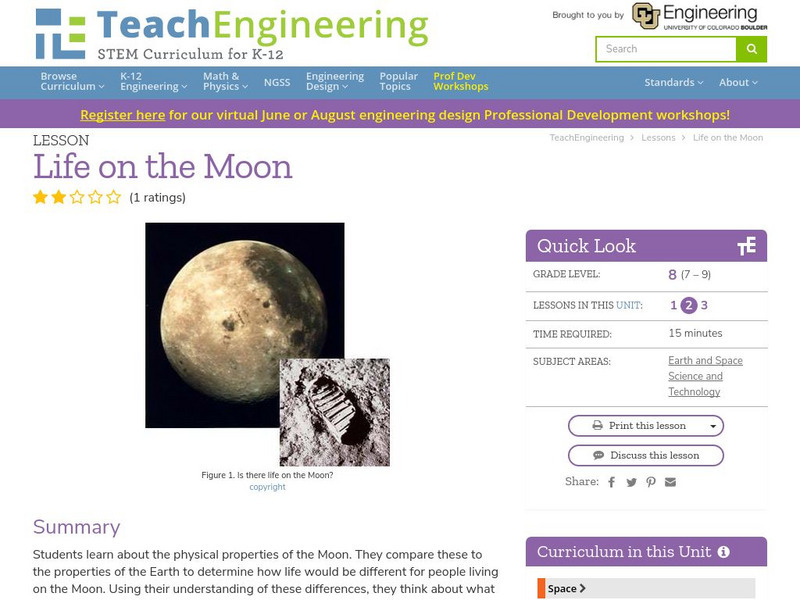


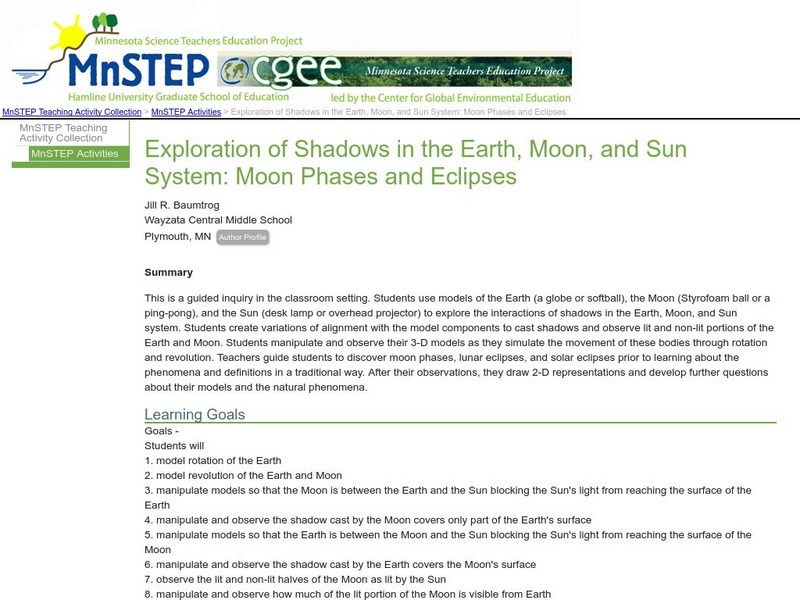


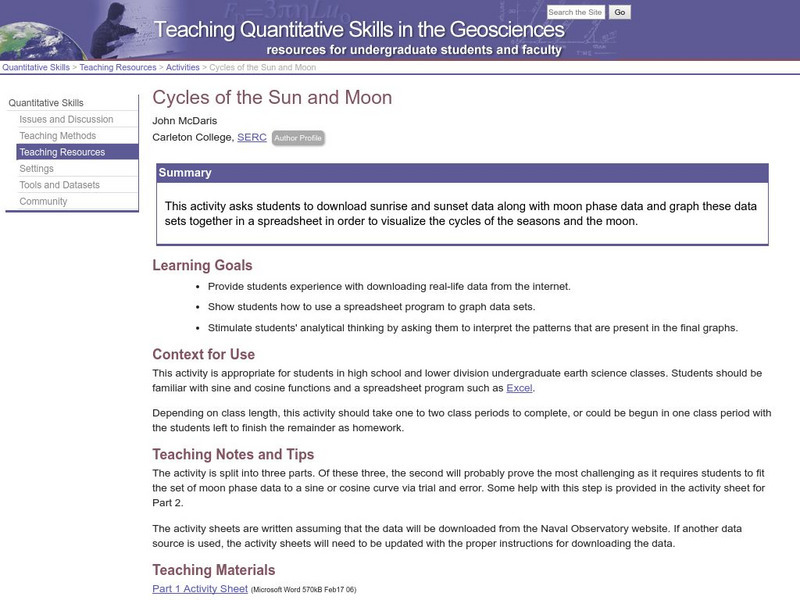

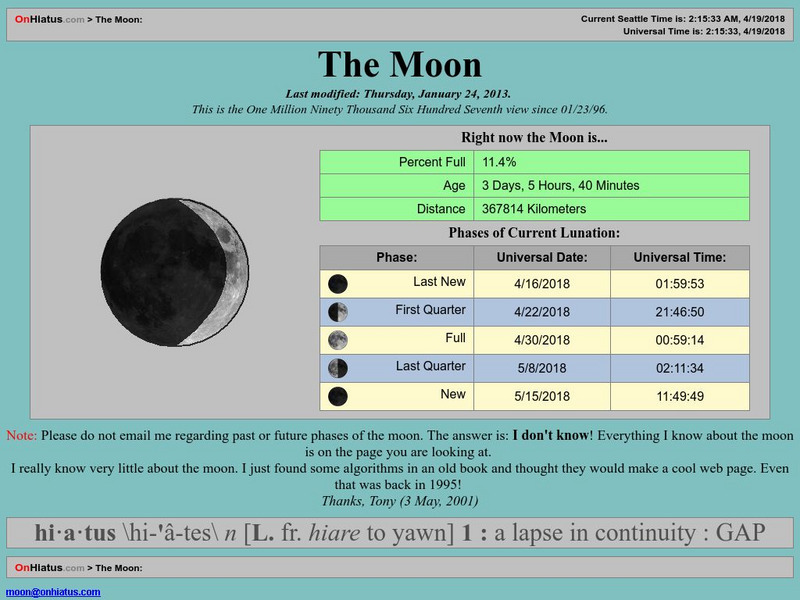
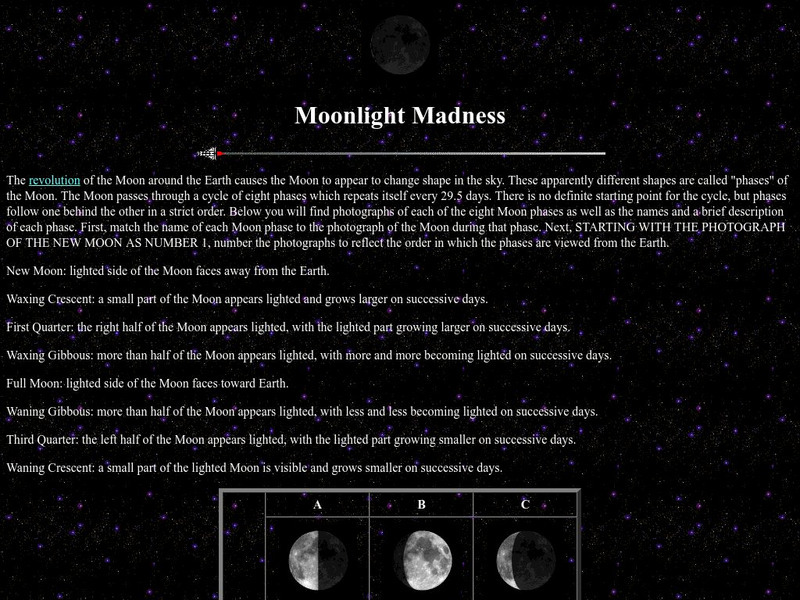

![Tops Learning Systems: Top Science: Moon on a Stick [Pdf] Activity Tops Learning Systems: Top Science: Moon on a Stick [Pdf] Activity](https://d15y2dacu3jp90.cloudfront.net/images/attachment_defaults/resource/large/FPO-knovation.png)
